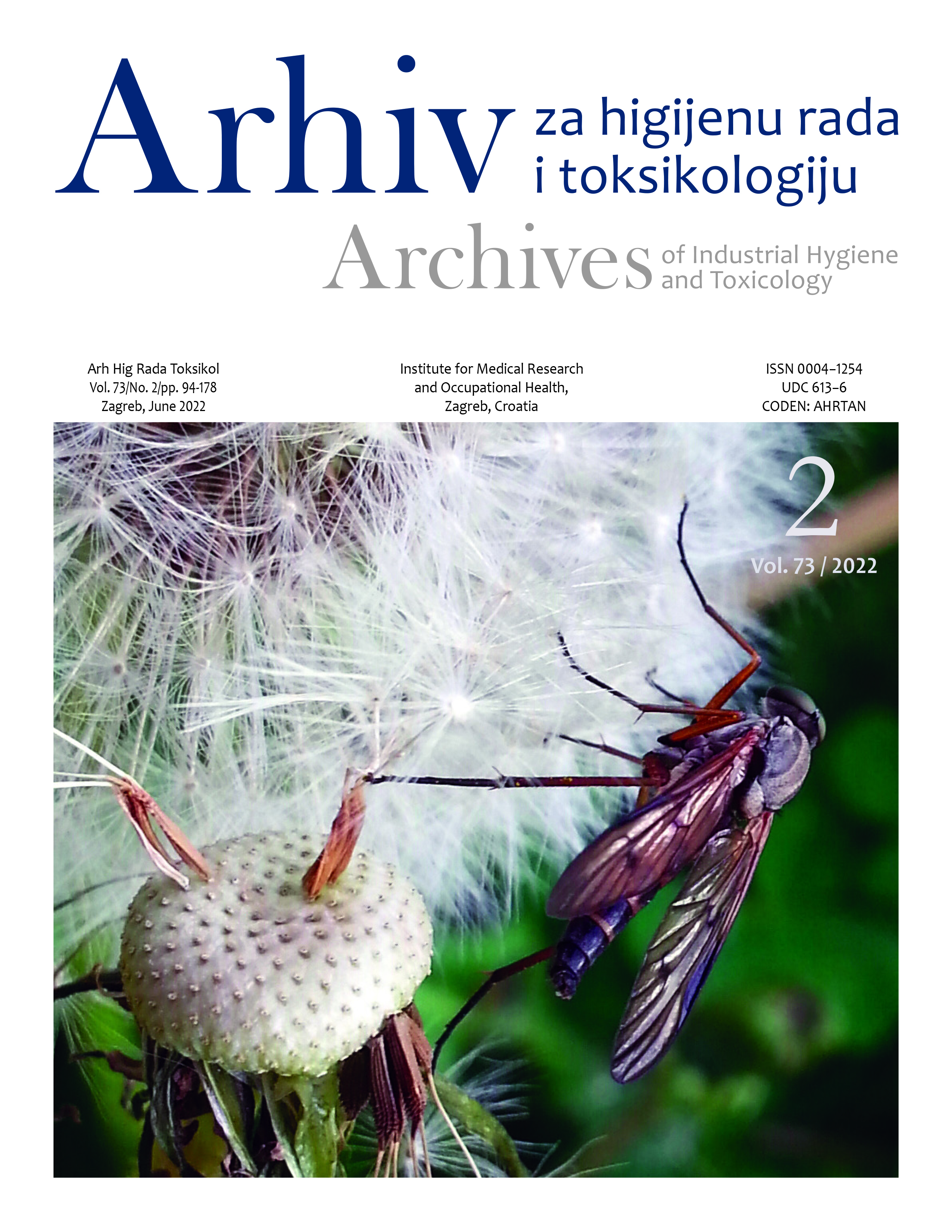Perfluorooctanoic acid affects mouse brain and liver tissue through oxidative stress
DOI:
https://doi.org/10.2478/aiht-2022-73-3629Keywords:
body weight, CAT, CoQ10, GSH, hepatotoxicity, in vivo, neurotoxicity, oxidative damage, PFOA, relative organ weight, SOD, taurineAbstract
The aim of this study was to investigate oxidative stress induced by perfluorooctanoic acid (PFOA) in the brain and liver tissues of Balb/c mice as well as protective effects of taurine and coenzyme Q10 (CoQ10) in both organs. For this purpose, animals were treated with PFOA (15 and 30 mg/kg) orally and their lipid peroxidation, total glutathione levels (GSH), and antioxidant enzyme activities measured and both tissues analysed for histopathological changes. Our results showed a dose-dependent decrease in body weight and increase in relative brain and liver weights, PFOA-induced lipid peroxidation and reduced glutathione peroxidase (GPx) activity in the brain tissue, and changes in GSH levels, GPx, superoxide dismutase (Cu-Zn SOD), and catalase (CAT) activities in the liver tissue. Pre-treatment with taurine or CoQ10 provided protection against PFOA-induced Cu-Zn SOD reduction in the liver tissue. Our findings evidence the depleting effect of PFOA on antioxidative systems and confirm that PFOA exerts its (neuro)toxicity through oxidative stress, but further research is needed to identify the exact toxicity mechanisms, especially in the brain.












